1. Badve CA, K MM, Iyer RS, Ishak GE, Khanna PC. Craniosynostosis : imaging review and primer on computed tomography. Pediatr Radiol. 2013; 43:728–742. quiz 725-727. PMID:
23636536.

2. Branson HM, Shroff MM. Craniosynostosis and 3-dimensional computed tomography. Semin Ultrasound CT MR. 2011; 32:569–577. PMID:
22108219.

3. Calandrelli R, D'Apolito G, Gaudino S, Sciandra MC, Caldarelli M, Colosimo C. Identification of skull base sutures and craniofacial anomalies in children with craniosynostosis : utility of multidetector CT. Radiol Med. 2014; 119:694–704. PMID:
24510759.

4. Cohen MM Jr. Craniosynostosis and syndromes with craniosynostosis : incidence, genetics, penetrance, variability, and new syndrome updating. Birth Defects Orig Artic Ser. 1979; 15:13–63. PMID:
393319.
5. Didier RA, Kuang AA, Schwartz DL, Selden NR, Stevens DM, Bardo DM. Decreasing the effective radiation dose in pediatric craniofacial CT by changing head position. Pediatr Radiol. 2010; 40:1910–1917. PMID:
20686761.

6. Eley KA, Watt-Smith SR, Sheerin F, Golding SJ. "Black Bone" MRI : a potential alternative to CT with three-dimensional reconstruction of the craniofacial skeleton in the diagnosis of craniosynostosis. Eur Radiol. 2014; 24:2417–2426. PMID:
25038852.

7. Ernst CW, Hulstaert TL, Belsack D, Buls N, Van Gompel G, Nieboer KH, et al. Dedicated sub 0.1 mSv 3DCT using MBIR in children with suspected craniosynostosis : quality assessment. Eur Radiol. 2016; 26:892–899. PMID:
26123408.

8. Jaffurs D, Denny A. Diagnostic pediatric computed tomographic scans of the head : actual dosage versus estimated risk. Plast Reconstr Surg. 2009; 124:1254–1260. PMID:
19935310.

9. Kaasalainen T, Palmu K, Lampinen A, Reijonen V, Leikola J, Kivisaari R, et al. Limiting CT radiation dose in children with craniosynostosis : phantom study using model-based iterative reconstruction. Pediatr Radiol. 2015; 45:1544–1553. PMID:
25939873.

10. Kirmi O, Lo SJ, Johnson D, Anslow P. Craniosynostosis : a radiological and surgical perspective. Semin Ultrasound CT MR. 2009; 30:492–512. PMID:
20099636.
11. Lenton KA, Nacamuli RP, Wan DC, Helms JA, Longaker MT. Cranial suture biology. Curr Top Dev Biol. 2005; 66:287–328. PMID:
15797457.

12. Marchac D, Renier D. Craniosynostosis. World J Surg. 1989; 13:358–365. PMID:
2773495.

13. Nagaraja S, Anslow P, Winter B. Craniosynostosis. Clin Radiol. 2013; 68:284–292. PMID:
22939693.

14. Persing JA, Jane JA, Shaffrey M. Virchow and the pathogenesis of craniosynostosis : a translation of his original work. Plast Reconstr Surg. 1989; 83:738–742. PMID:
2648432.
15. Regelsberger J, Delling G, Helmke K, Tsokos M, Kammler G, Kränzlein H, et al. Ultrasound in the diagnosis of craniosynostosis. J Craniofac Surg. 2006; 17:623–625. discussion 626-628. PMID:
16877903.

16. Schweitzer T, Böhm H, Meyer-Marcotty P, Collmann H, Ernestus RI, Krauß J. Avoiding CT scans in children with single-suture craniosynostosis. Childs Nerv Syst. 2012; 28:1077–1082. PMID:
22349960.

17. Schweitzer T, Kunz F, Meyer-Marcotty P, Müller-Richter UD, Böhm H, Wirth C, et al. Diagnostic features of prematurely fused cranial sutures on plain skull X-rays. Childs Nerv Syst. 2015; 31:2071–2080. PMID:
26298825.

18. Slater BJ, Lenton KA, Kwan MD, Gupta DM, Wan DC, Longaker MT. Cranial sutures: a brief review. Plast Reconstr Surg. 2008; 121:170e–178e.

19. Soboleski D, McCloskey D, Mussari B, Sauerbrei E, Clarke M, Fletcher A. Sonography of normal cranial sutures. AJR Am J Roentgenol. 1997; 168:819–821. PMID:
9057541.

20. Soboleski D, Mussari B, McCloskey D, Sauerbrei E, Espinosa F, Fletcher A. High-resolution sonography of the abnormal cranial suture. Pediatr Radiol. 1998; 28:79–82. PMID:
9472048.

21. Sze RW, Parisi MT, Sidhu M, Paladin AM, Ngo AV, Seidel KD, et al. Ultrasound screening of the lambdoid suture in the child with posterior plagiocephaly. Pediatr Radiol. 2003; 33:630–636. PMID:
12879318.

22. Vazquez JL, Pombar MA, Pumar JM, del Campo VM. Optimised low-dose multidetector CT protocol for children with cranial deformity. Eur Radiol. 2013; 23:2279–2287. PMID:
23504037.

23. Weinzweig J, Kirschner RE, Farley A, Reiss P, Hunter J, Whitaker LA, et al. Metopic synostosis : Defining the temporal sequence of normal suture fusion and differentiating it from synostosis on the basis of computed tomography images. Plast Reconstr Surg. 2003; 112:1211–1218. PMID:
14504503.

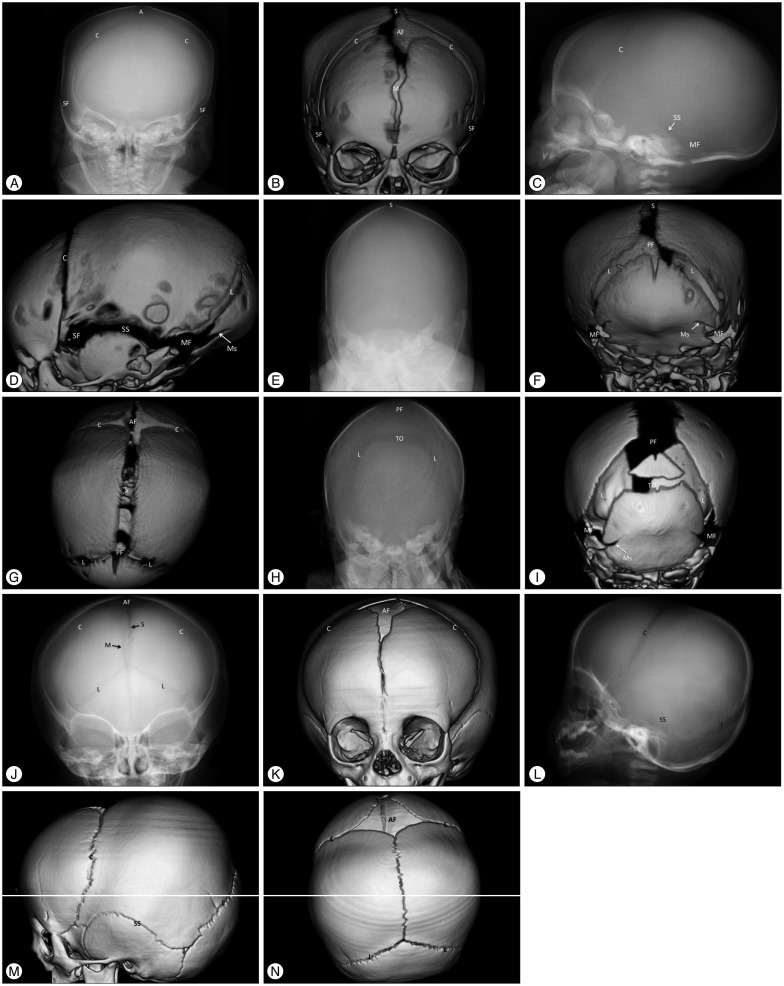

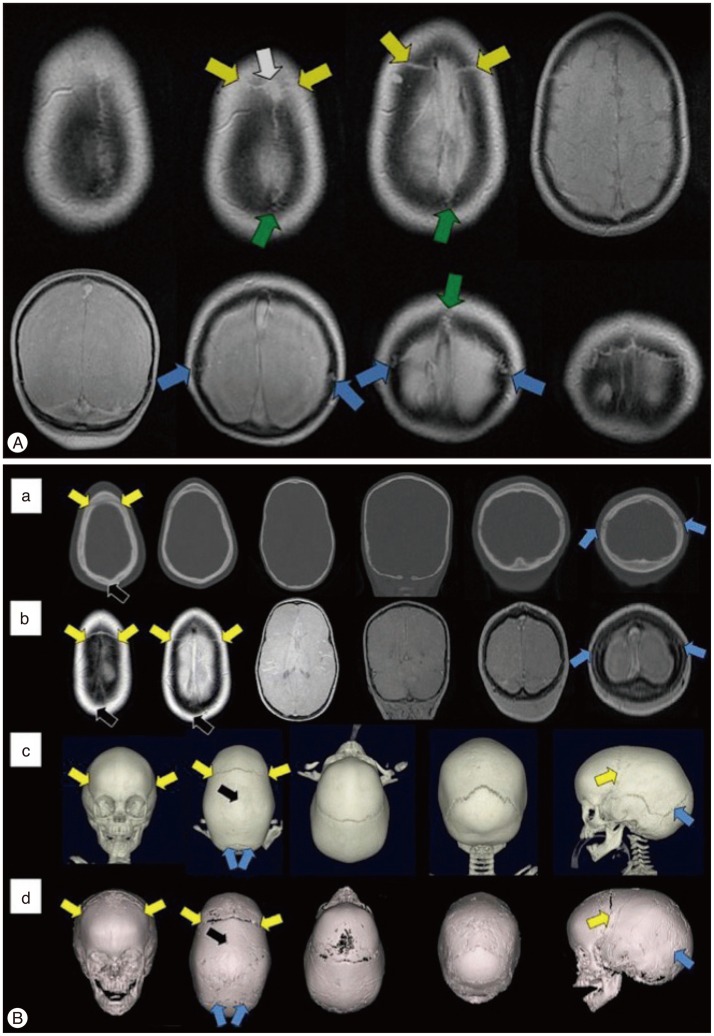

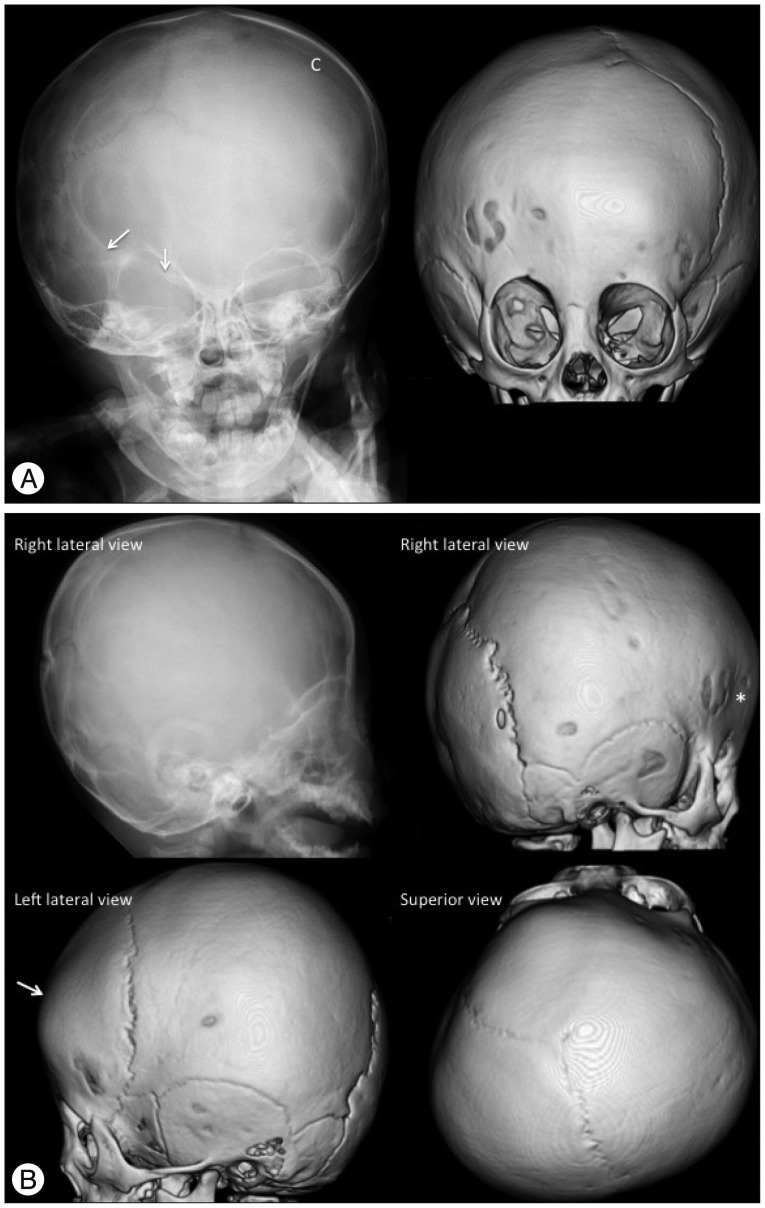
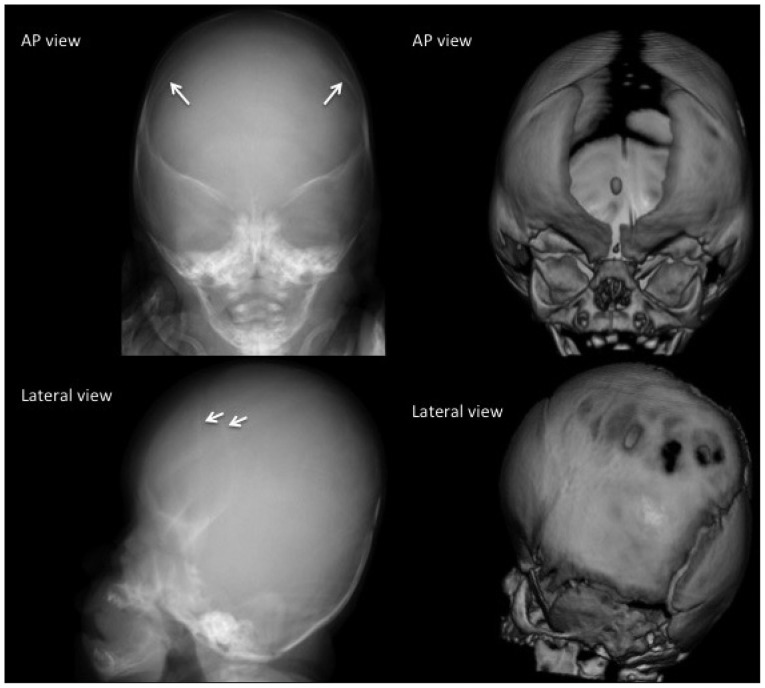
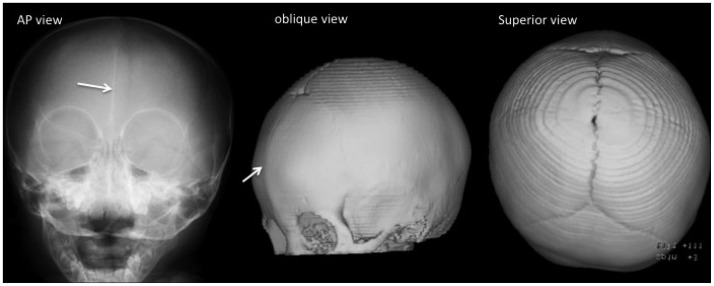
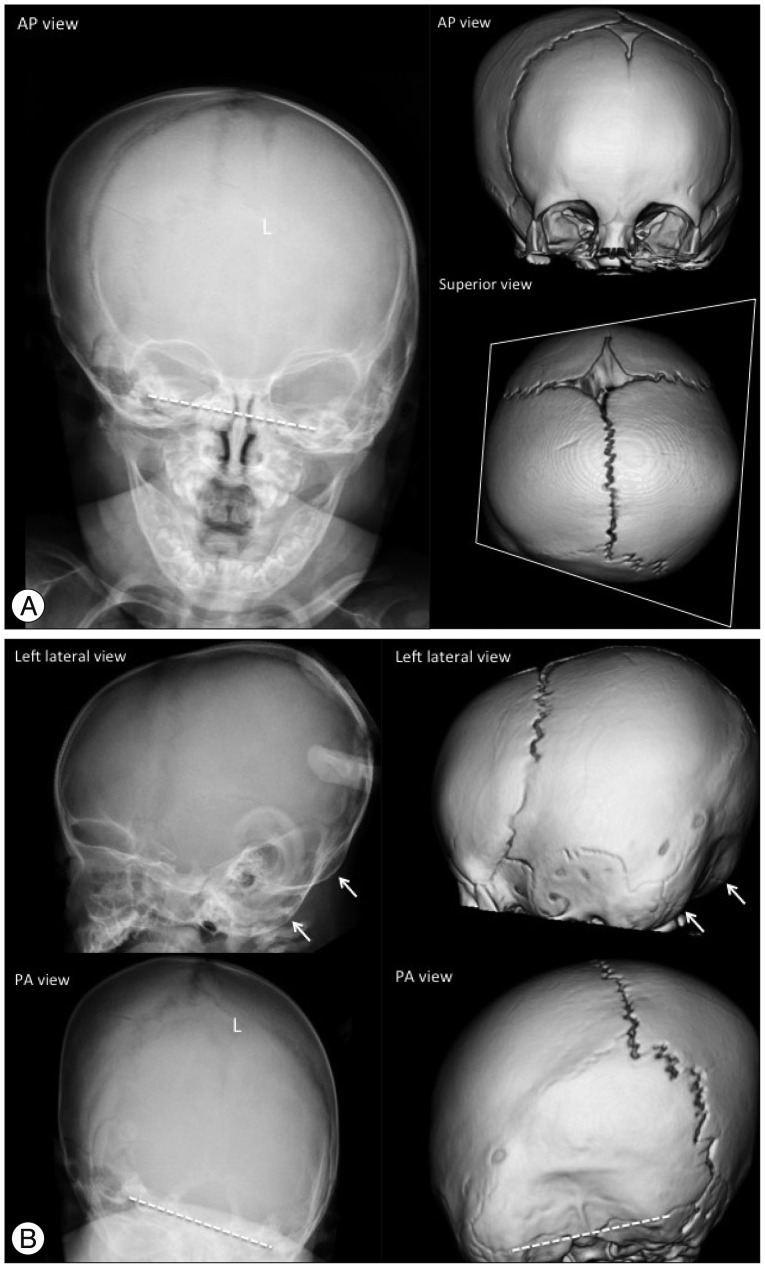
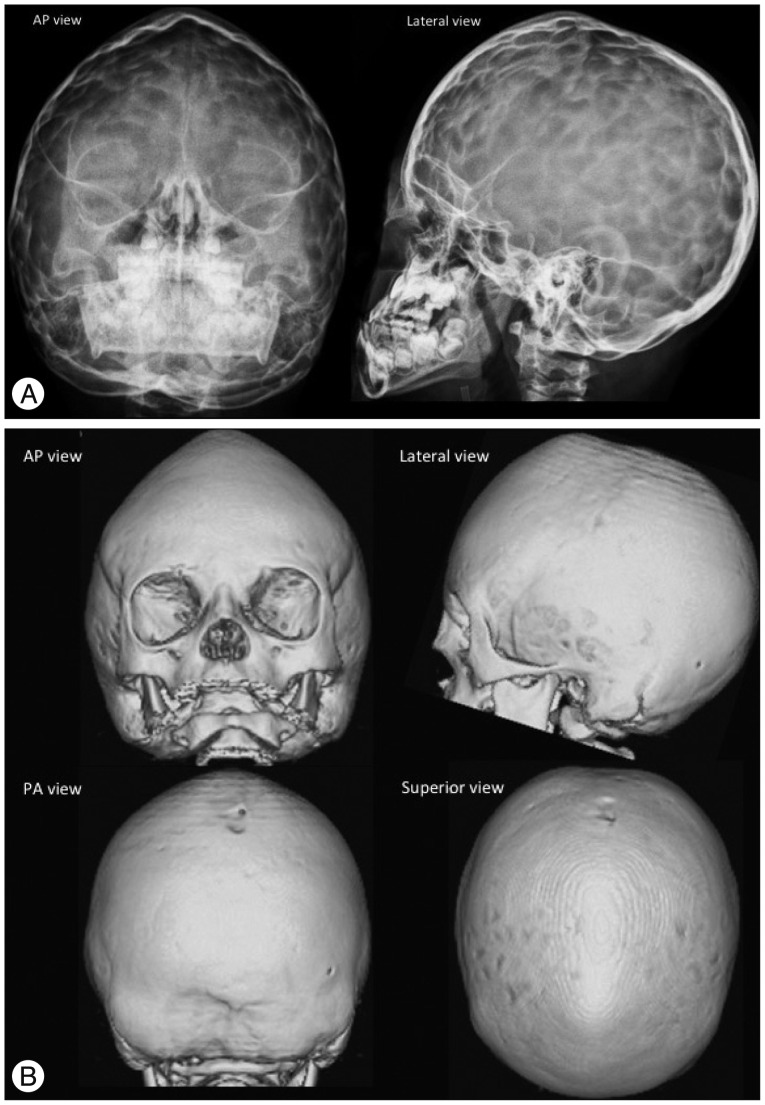
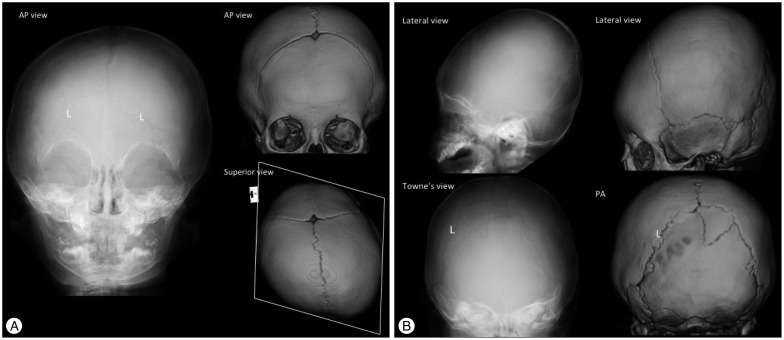




 PDF
PDF ePub
ePub Citation
Citation Print
Print


 XML Download
XML Download